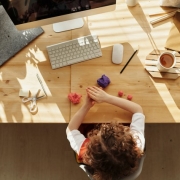The Magic of Measuring Liquids: A Splash into Math for Kids
Unveiling the Mysteries of Measuring Liquid
Ever wondered how bakers know just how much milk to add to their cake mixture or how scientists know the exact amount of chemicals to mix in their experiments? It all revolves around the magical world of measuring liquids! Let's dive in and discover the fun-filled journey of measuring by volume and understanding the ins and outs of measurement of liquid.
H2: What Does Measuring Liquid Mean?
At the very core, measuring liquid is all about determining how much space a liquid occupies. Just like you might want to know how tall you are, in the world of cooking, chemistry, and everyday life, it's crucial to know how much liquid is in a container. And that, dear readers, is called its volume.
H2: Tools Used in Measuring Volume
Imagine trying to pour milk into your cereal with no clue about how much you’re pouring. Chaos, right? That's where tools come in! The most common tools for measuring volume include:
Graduated Cylinders: These are tall, slender containers with markings to help measure liquids accurately.
Measuring Cups: Found in almost every kitchen, they come with clear markings, helping you add the right amount of ingredients every time.
Beakers: Often found in science labs, these come with a spout for easy pouring.
H2: The Importance of Measuring Liquids in Daily Life
Why does measuring liquid matter? Whether you're following a juice recipe, taking medicine, or preparing a bath for your little sibling, knowing the exact measurement of liquid ensures accuracy and safety.
H2: Tips to Perfectly Measure Liquid
Level Eyesight: Always check liquid measurements at eye level. Bend down or lift the measuring tool to ensure you're looking straight at the measurement markings.
Avoid Overfilling: It's always better to measure a tad bit less than overfill. You can always add more if needed!
Clean Tools: After measuring liquids, always clean your tools to avoid mixing and ensure accurate measurements next time.
H2: Fun Facts and FAQs about Measuring Liquids
Q: Why do we need to measure liquids accurately in cooking?
A: In cooking, even a small difference in the measurement of liquid can change the taste or texture of the dish. That’s why precision is key!
Q: Can I use any container to measure liquid?
A: While it's possible, it's best to use containers designed for measuring volume. They provide more accurate measurements.
Q: How do scientists ensure accurate measurements in labs?
A: Scientists often use precision tools like burettes and pipettes to measure liquids down to the very last drop!
Want to turn this liquid measuring adventure into a fun-filled math game? Dive into the exciting world of math games right here and let the fun overflow!
In conclusion, measuring liquids is not just a vital math skill, but it's also an essential life skill. As you pour, measure, and mix, remember – every drop counts! So, the next time you’re in the kitchen or watching a fascinating experiment, you’ll know the magic behind every liquid measurement. Happy measuring!










